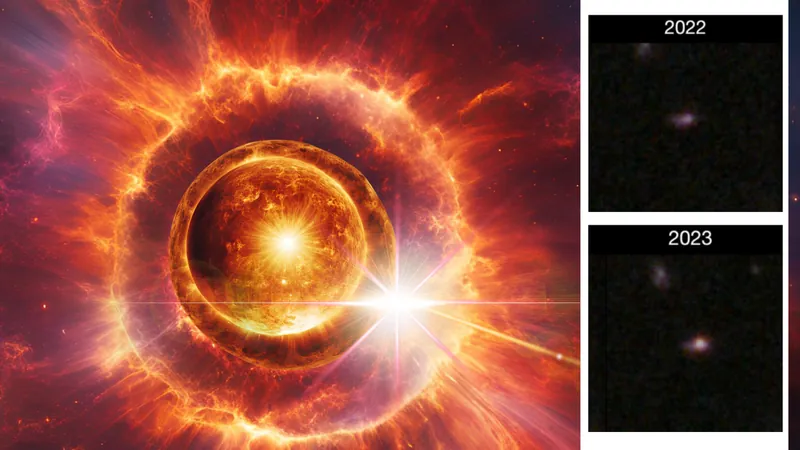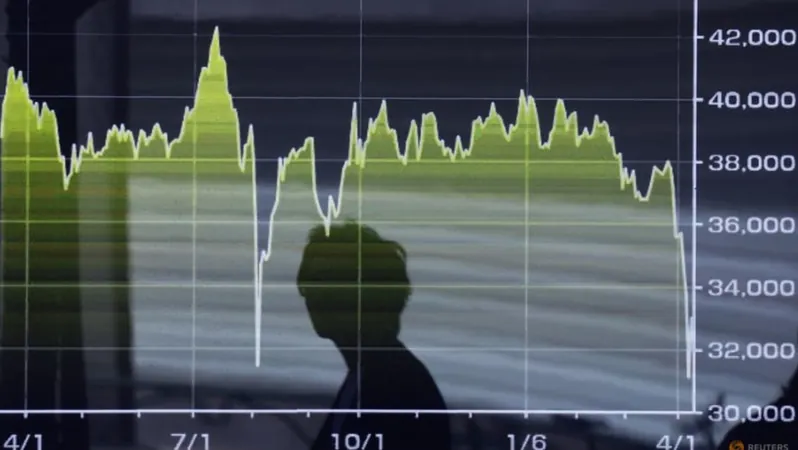
Spectacular Discovery! James Webb Space Telescope Unveils One of the Universe’s Earliest and Most Powerful Supernovas
2025-01-14
Author: Ming
In an awe-inspiring revelation, astronomers utilizing the James Webb Space Telescope (JWST) have detected one of the earliest and most dramatic supernovas ever observed—a cosmic explosion that occurred approximately 11.4 billion years ago, merely 2 billion years after the Big Bang. This remarkable event, dubbed AT 2023adsv, was the demise of a star that weighed a staggering 20 times more than our Sun, underscoring the fascinating and violent nature of celestial life in the early universe.
Part of the JWST Advanced Deep Extragalactic Survey (JADES), this groundbreaking discovery offers invaluable insights into the chaotic and violent cosmos that existed billions of years ago. Astronomers are particularly intrigued by the unique characteristics of this supernova, which is unlike more recent stellar explosions seen in the local universe. The blast is believed to be extraordinarily powerful, indicative of the primordial conditions that shaped some of the universe's first stars.
“Early stars were vastly different from those we see today; they were colossal, incandescent, and their explosions were truly gargantuan,” stated David Coulter, a researcher at the Space Telescope Science Institute, while presenting at the 245th meeting of the American Astronomical Society in Maryland. The findings have opened exciting avenues for understanding the formation and evolution of stars in the infant universe, and there's speculation around the potential number of ancient supernovas that JWST will continue to uncover.
A Journey Through Cosmic Evolution
The early universe, initially composed mostly of hydrogen and helium, underwent remarkable transformations through the births and deaths of stars. The first generation, known as Population III stars, arose from areas of higher density in this primordial gas. When these massive stars reached the end of their nuclear fuel, their cores collapsed, leading to the formation of neutron stars or black holes, whilst expelling their outer layers in explosive supernovae.
These explosive events enriched the surrounding gas with heavier elements, allowing the subsequent generations of stars (Population II and Population I) to form from this enriched material, including our very own Sun. Fascinatingly, the early supernovae were more intense due to the lack of metals, which shaped the characteristics and lifespans of the stars involved.
So far, the JADES team has uncovered over 80 ancient supernovas, revealing that studying these cosmic phenomena is paramount to understanding the composition of early galaxies.
A Cosmic Connection
The unique chemical composition of AT 2023adsv positions it as not only one of the earliest detected supernovas but also an example of the environments present in primordial galaxies. According to Coulter, “The light from this supernova traveled 6 billion years before our Sun formed, indicating that it originated from an environment starkly different from that of our solar system.”
While similar in some respects to contemporary supernovas found in pristine environments, AT 2023adsv stands apart due to its extraordinary mass and the enormous energy released during the explosion—reported to be nearly double that of the average supernova from massive nearby stars.
The discoveries facilitated by the James Webb Space Telescope are reshaping our understanding of the universe's early years and the formidable processes that birthed its first stars. Keep your eyes peeled as the JWST continues its journey of cosmic exploration—who knows what other magnificent secrets await in the depths of space?




 Brasil (PT)
Brasil (PT)
 Canada (EN)
Canada (EN)
 Chile (ES)
Chile (ES)
 Česko (CS)
Česko (CS)
 대한민국 (KO)
대한민국 (KO)
 España (ES)
España (ES)
 France (FR)
France (FR)
 Hong Kong (EN)
Hong Kong (EN)
 Italia (IT)
Italia (IT)
 日本 (JA)
日本 (JA)
 Magyarország (HU)
Magyarország (HU)
 Norge (NO)
Norge (NO)
 Polska (PL)
Polska (PL)
 Schweiz (DE)
Schweiz (DE)
 Singapore (EN)
Singapore (EN)
 Sverige (SV)
Sverige (SV)
 Suomi (FI)
Suomi (FI)
 Türkiye (TR)
Türkiye (TR)
 الإمارات العربية المتحدة (AR)
الإمارات العربية المتحدة (AR)